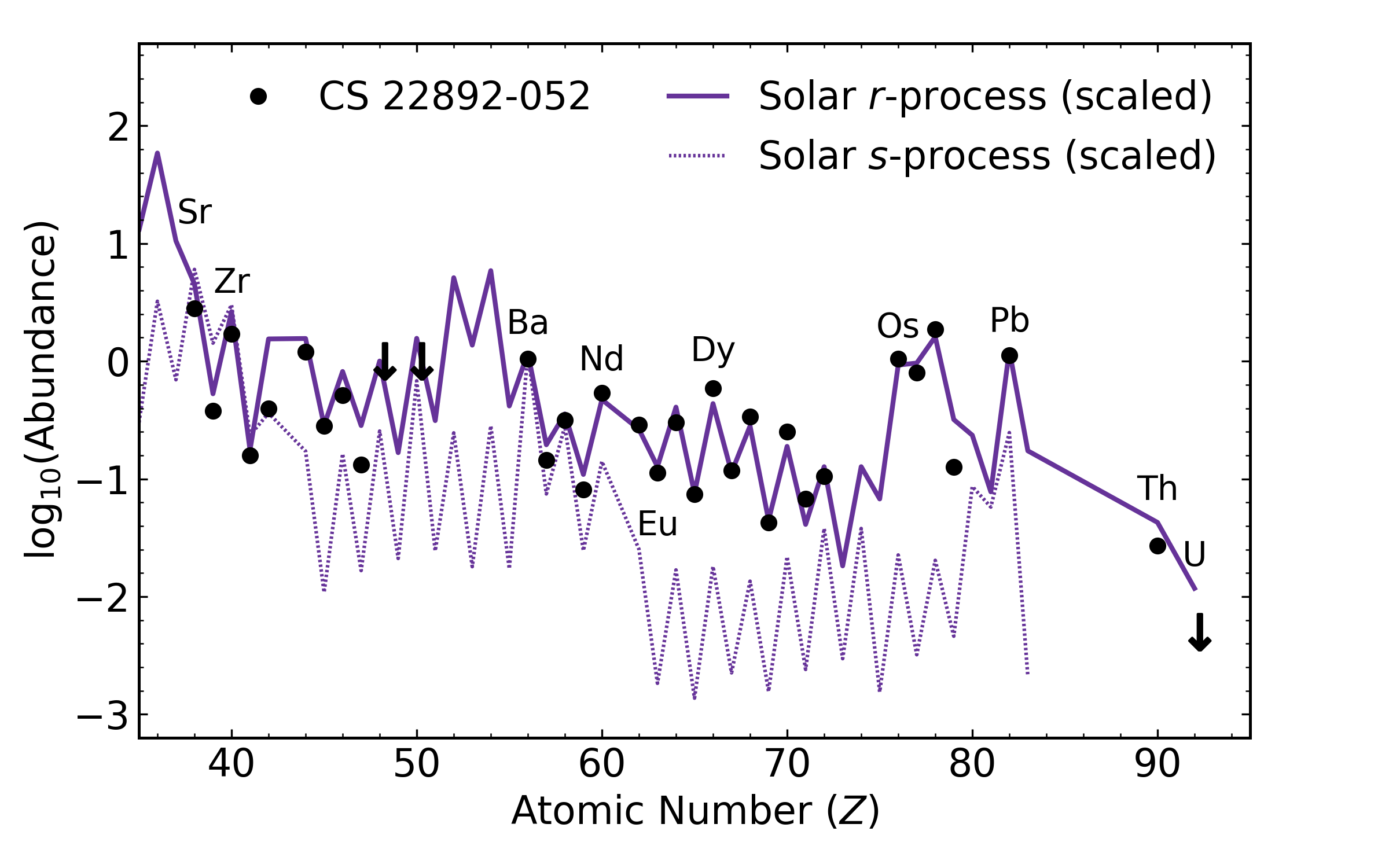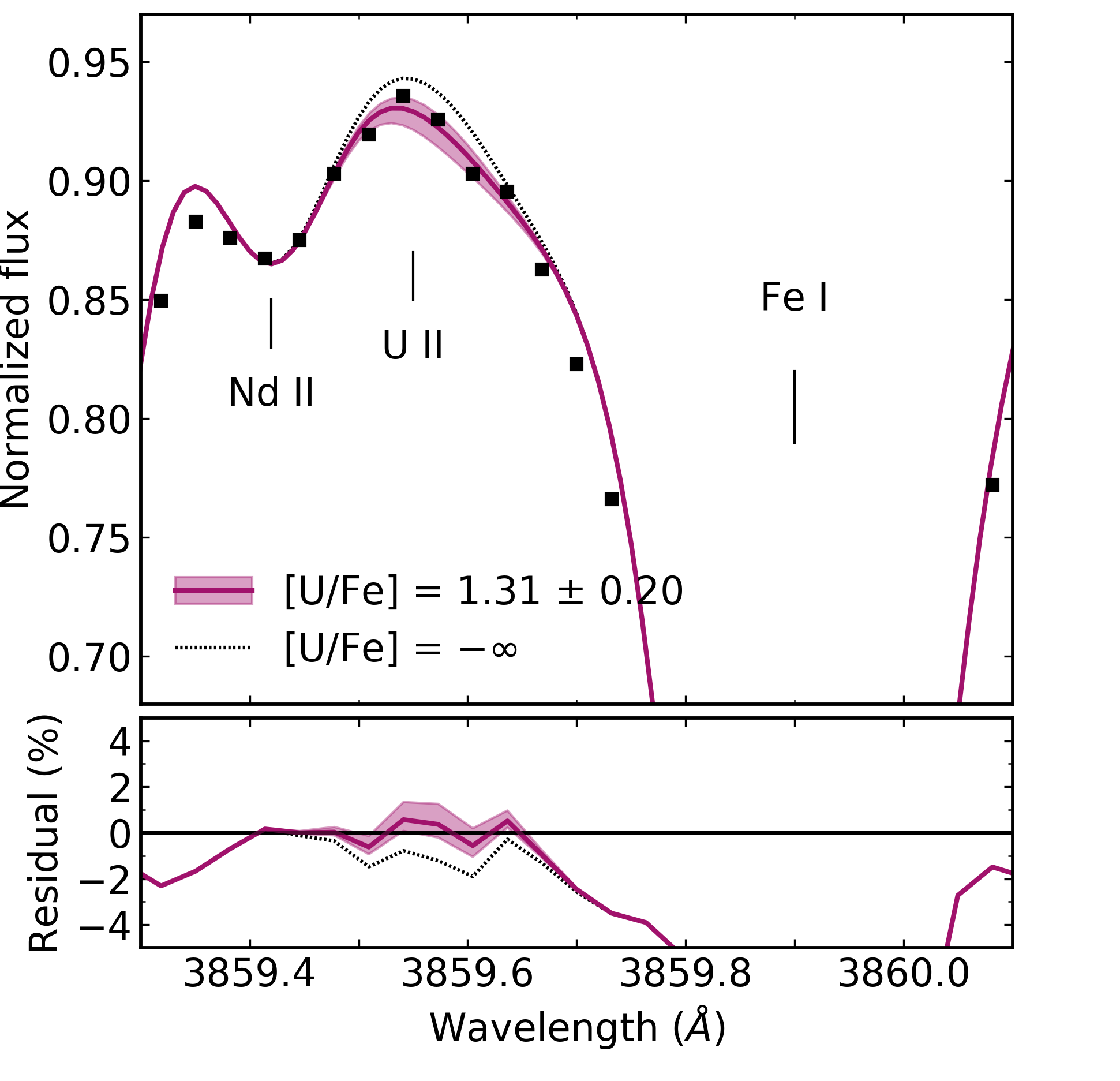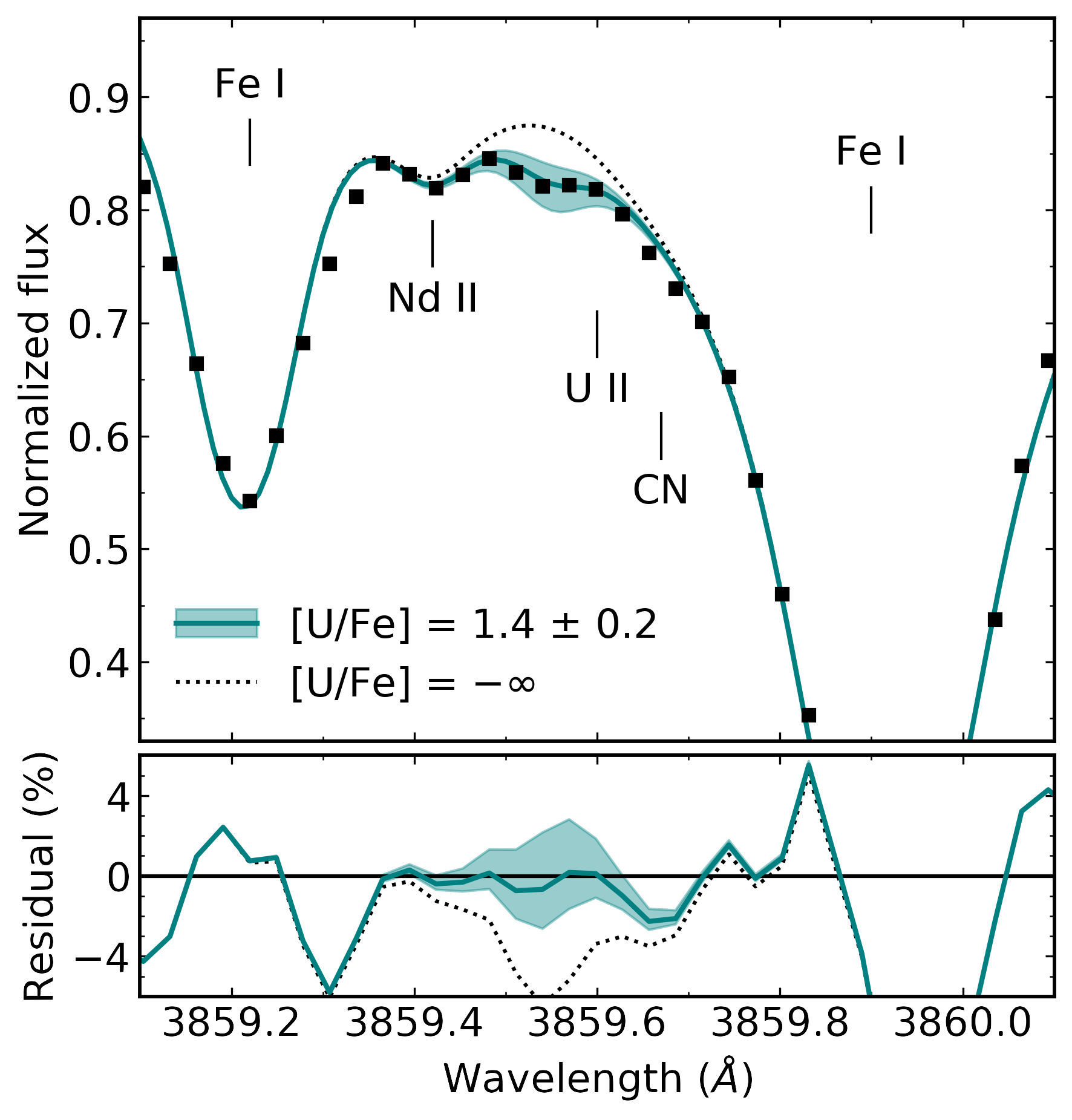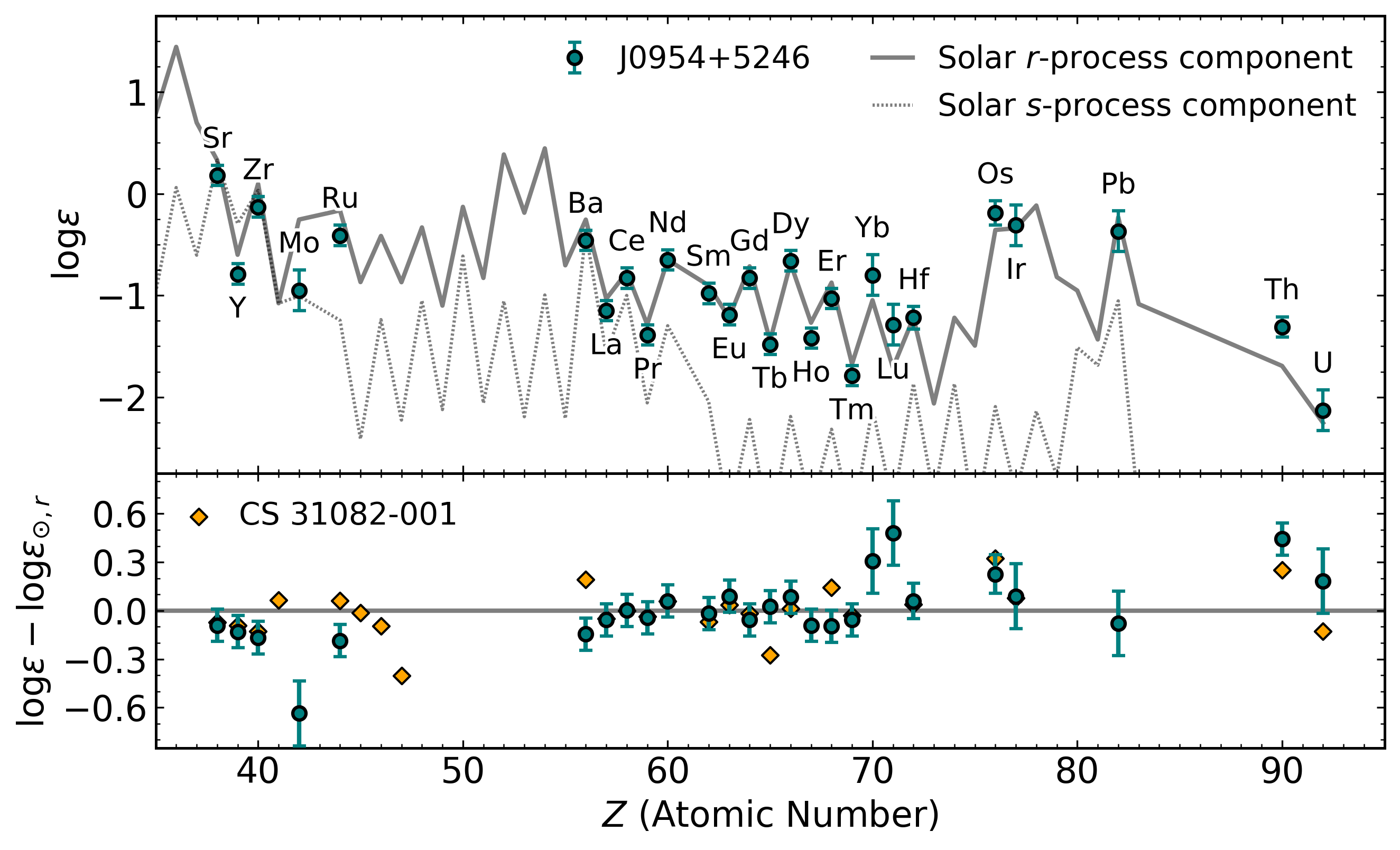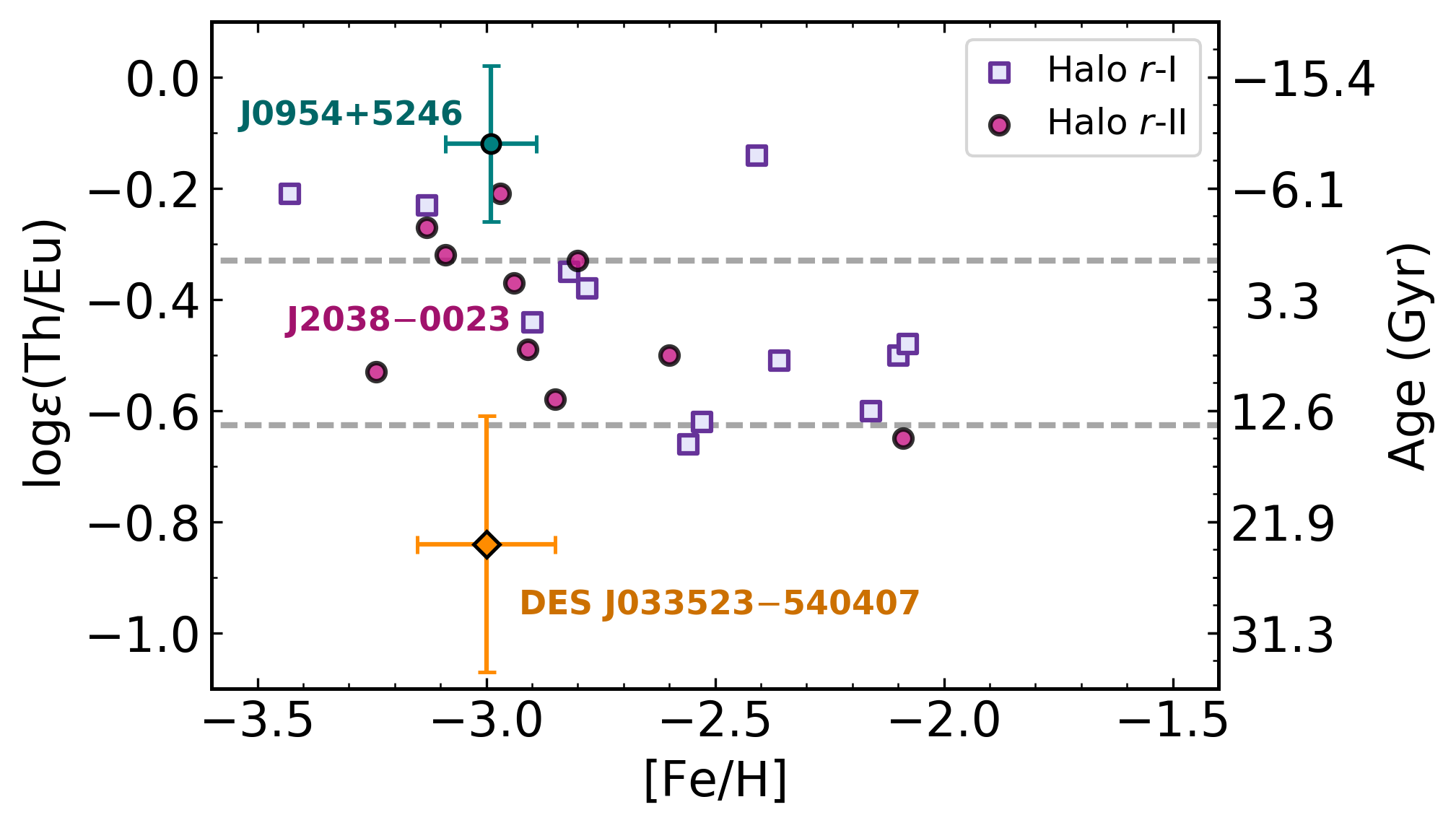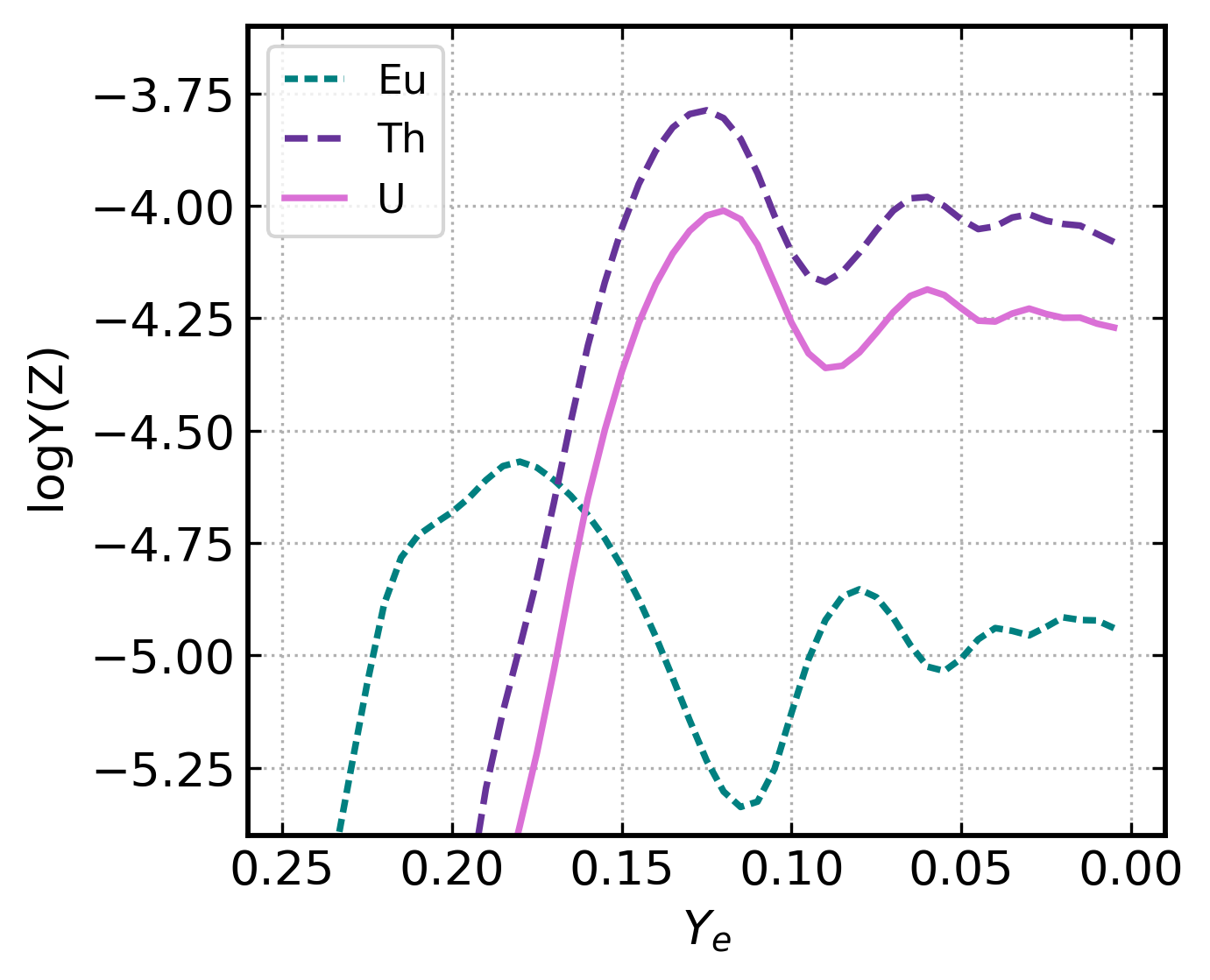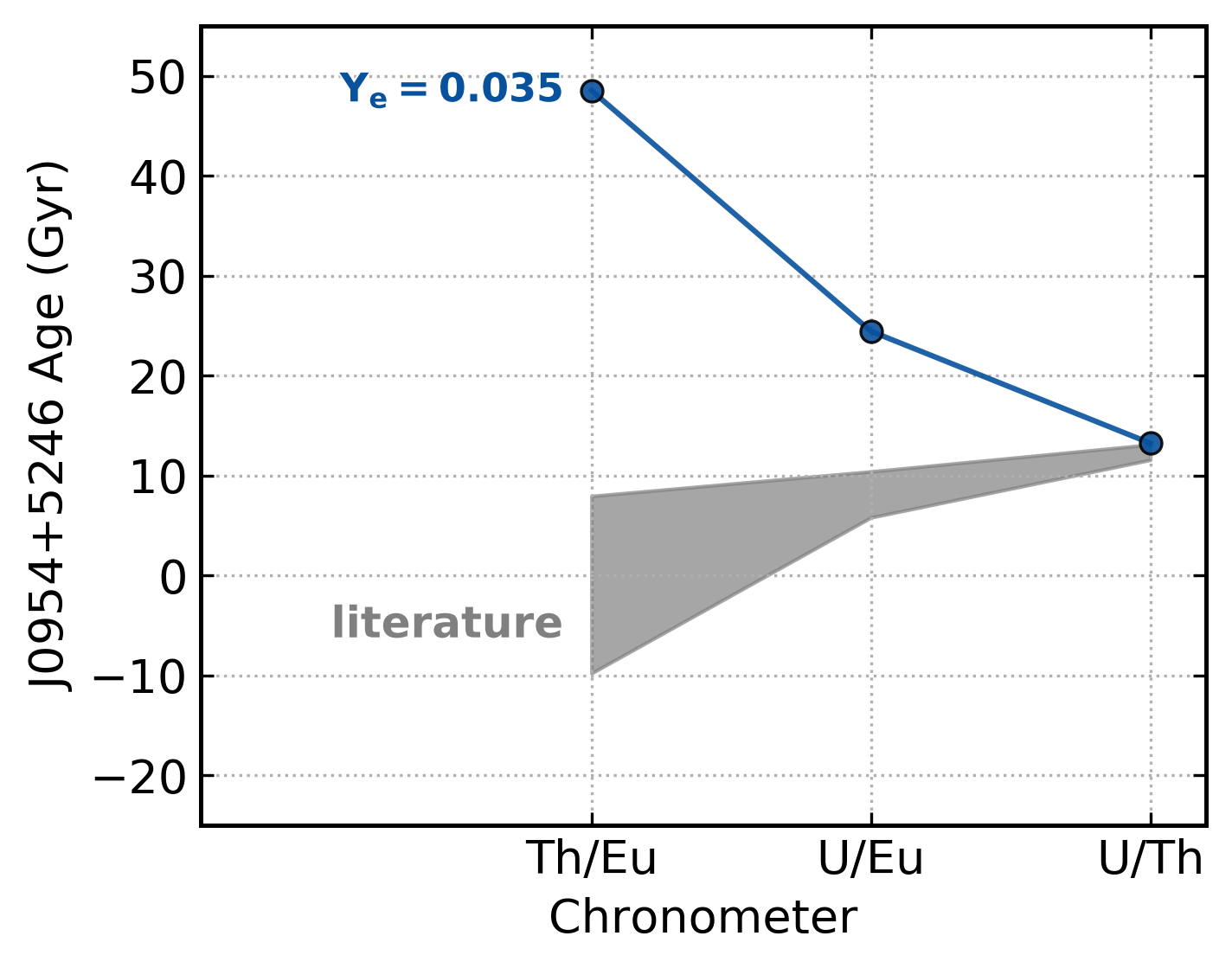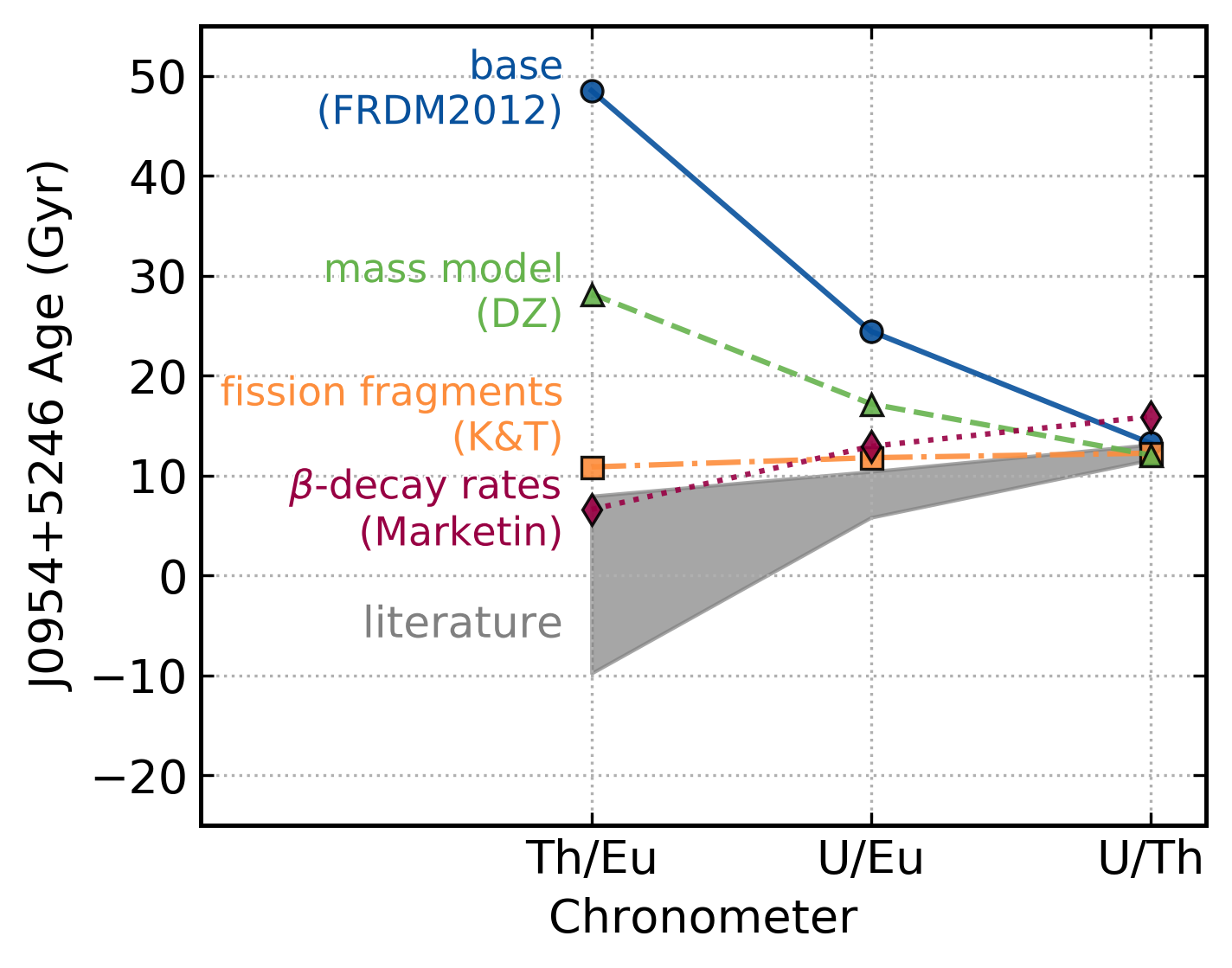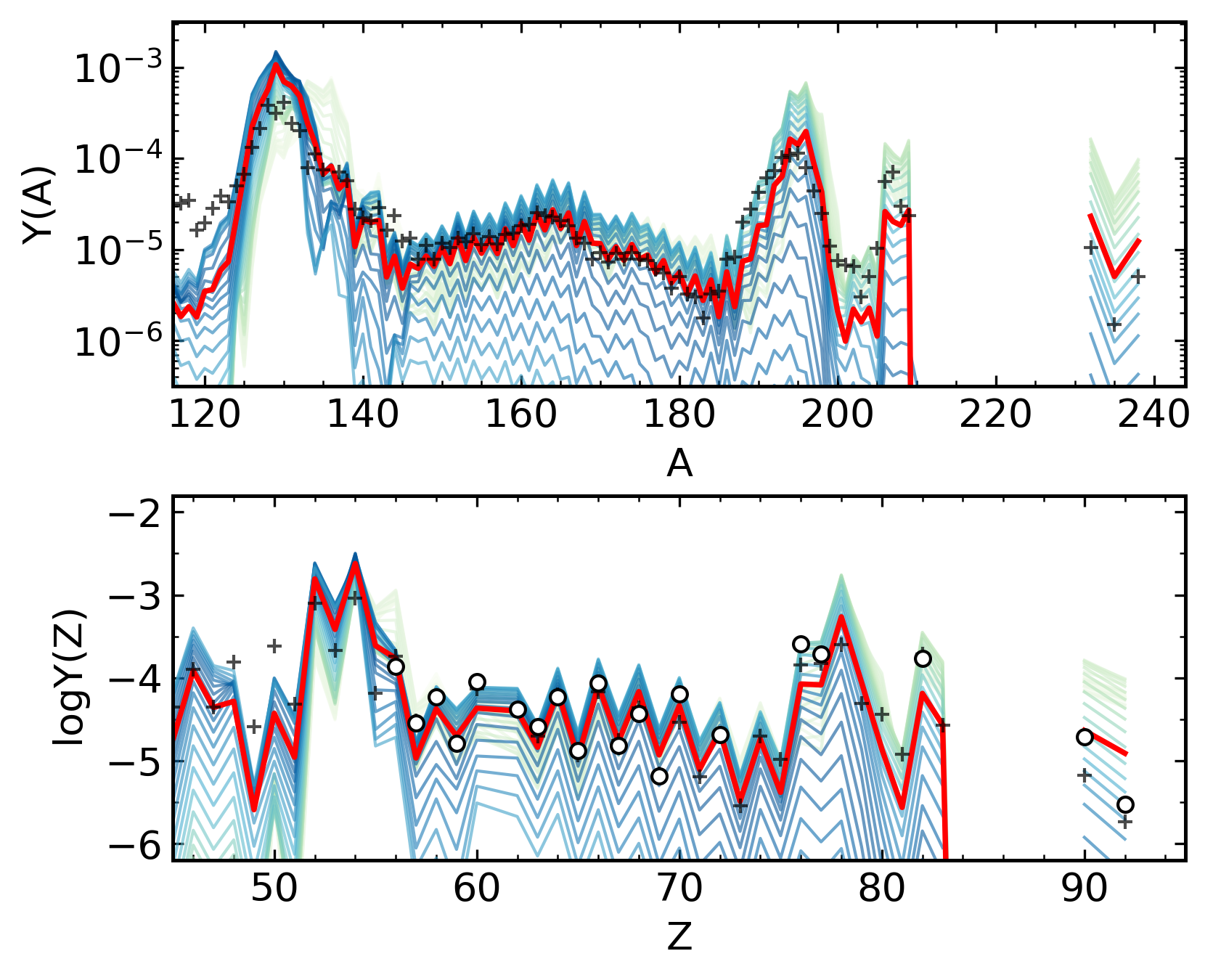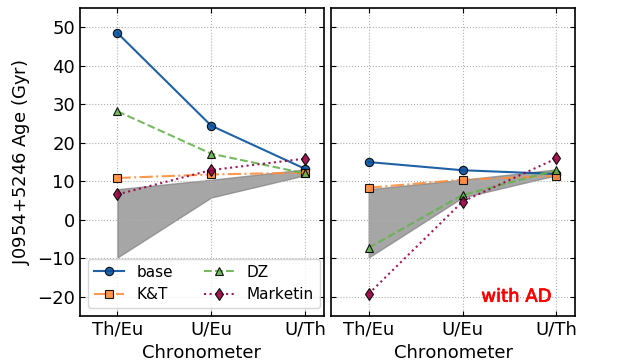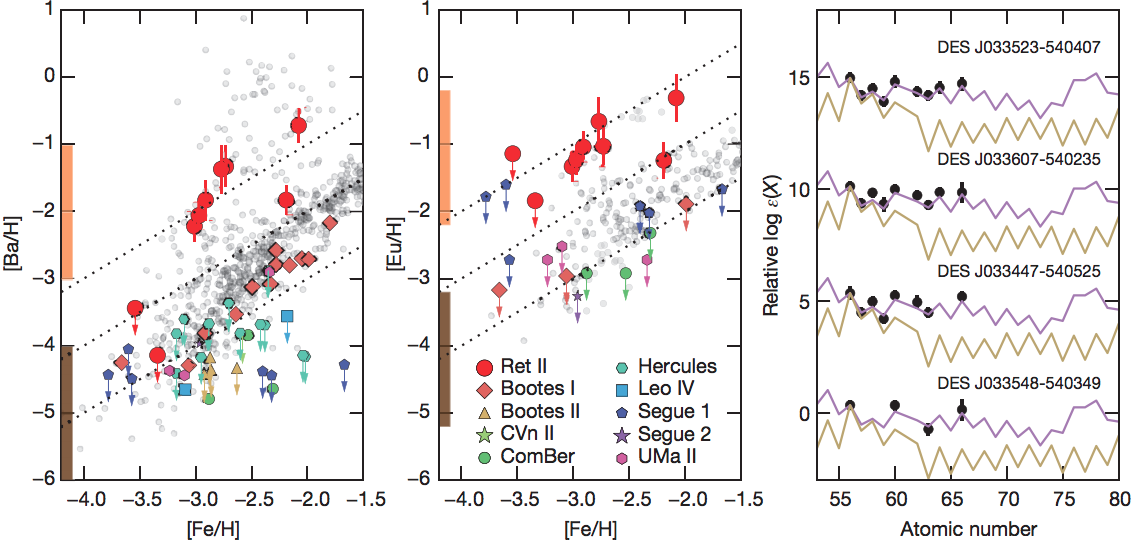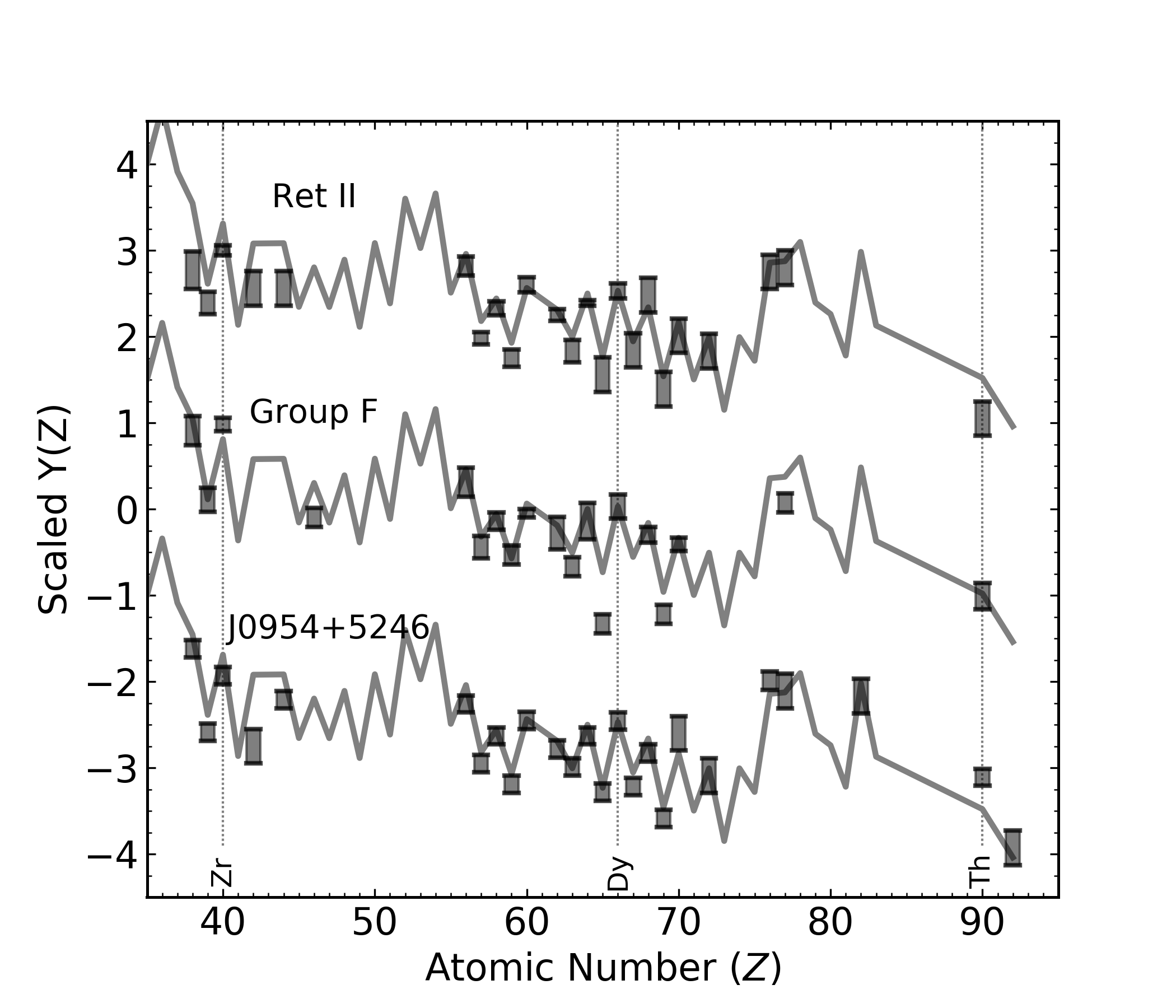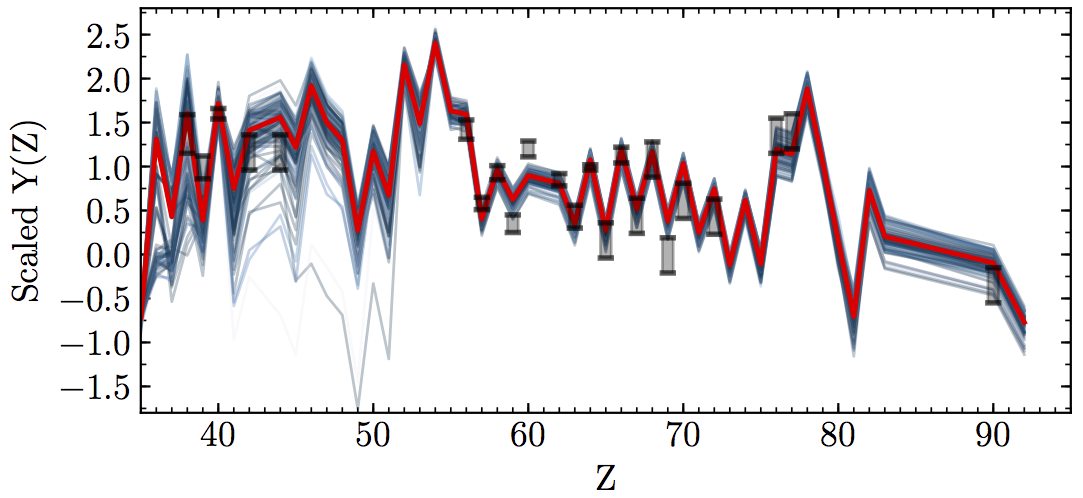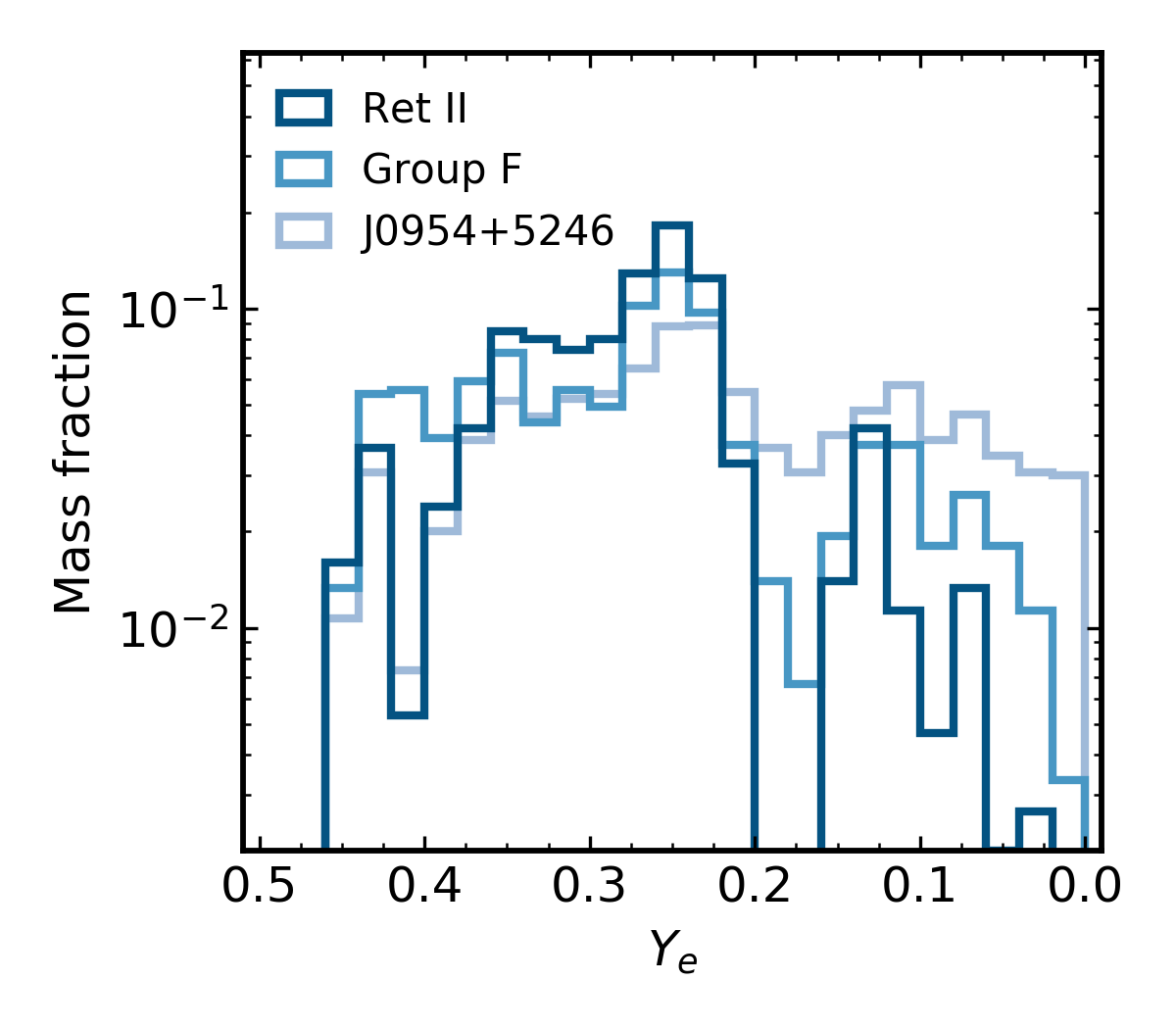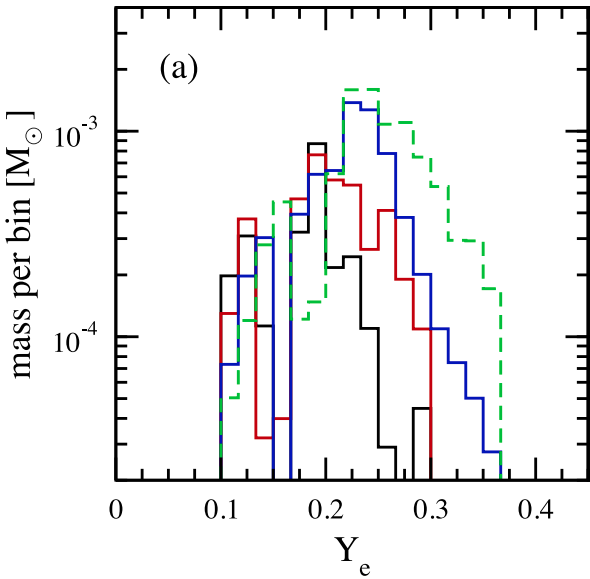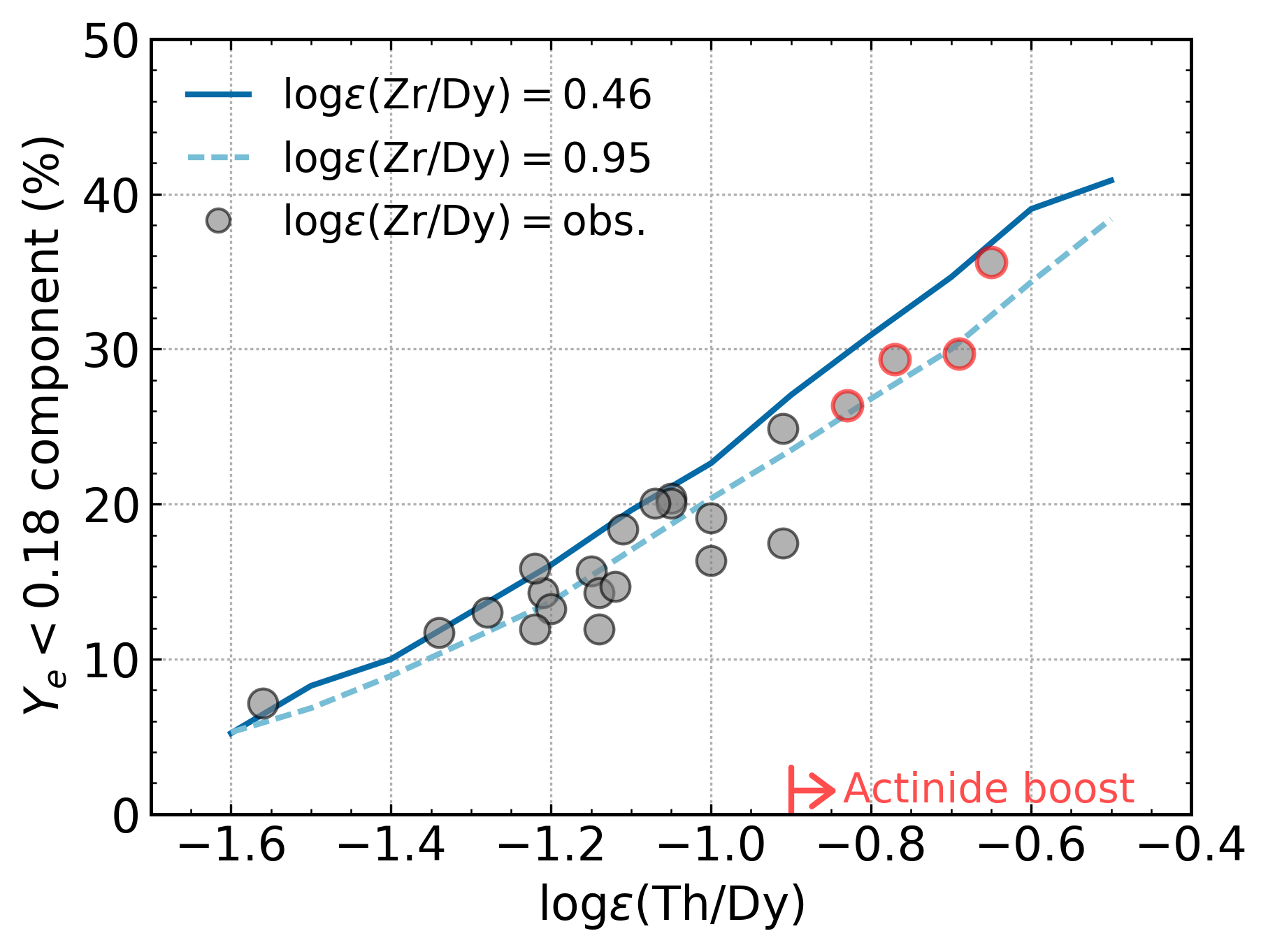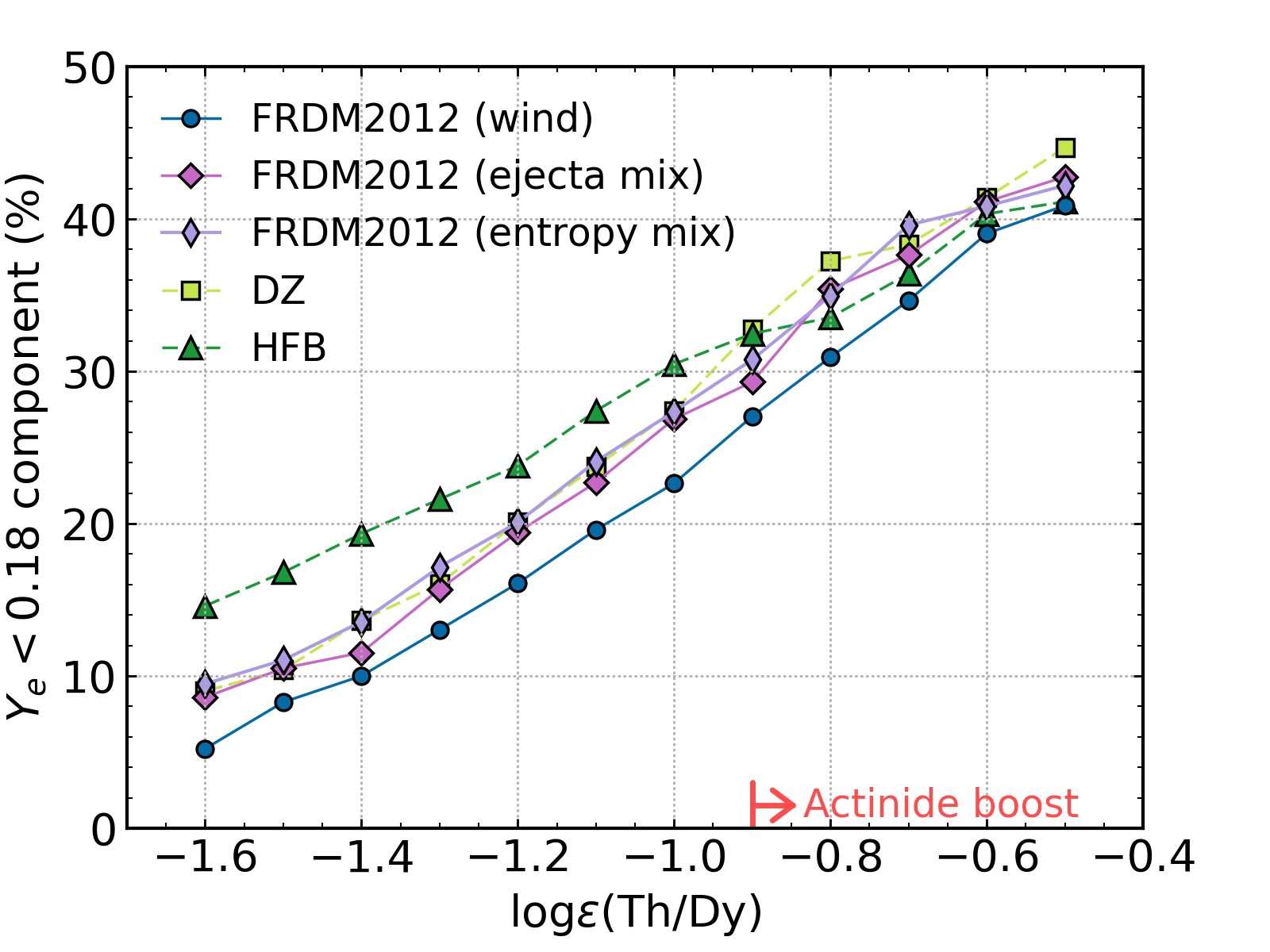Actinide-Boost Stars may not
Suggest a Separate r-Process Site
Erika M. Holmbeck
28 March 2019
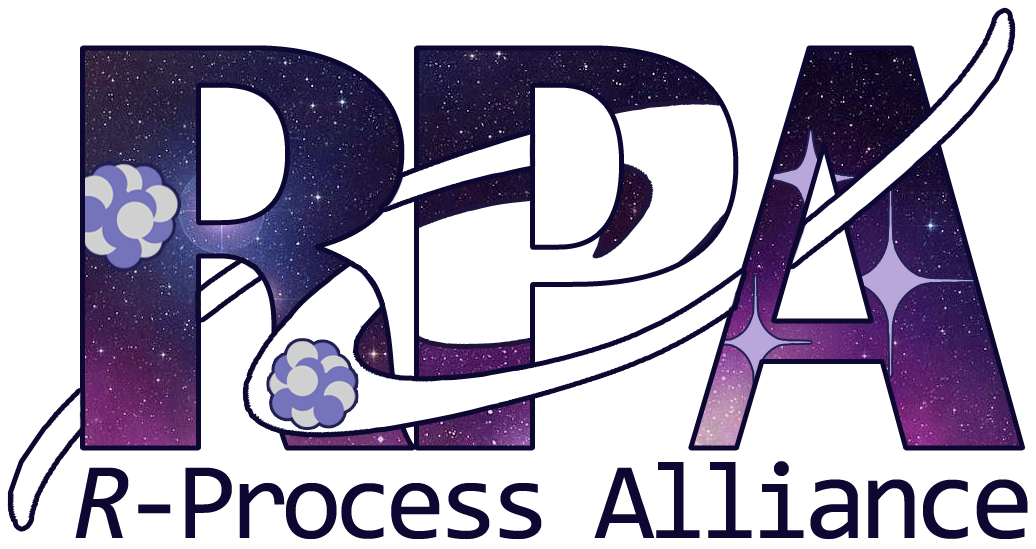
Ages and cosmochronometry¶
232-Th and 238-U are radioactive
Allows radioactive decay dating
$$ t = 46.67~\text{Gyr} \left[\log\epsilon\left(\text{Th/Eu}\right)_0 - \log\epsilon\left(\text{Th/Eu}\right)_{\text{obs}}\right] $$
$$ t = 14.84~\text{Gyr} \left[\log\epsilon\left(\text{U/Eu}\right)_0 - \log\epsilon\left(\text{U/Eu}\right)_{\text{obs}}\right] $$
$$ t = 21.80~\text{Gyr} \left[\log\epsilon\left(\text{U/Th}\right)_0 - \log\epsilon\left(\text{U/Th}\right)_{\text{obs}}\right] $$
Actinides and the r-process¶
Can varying levels of neutron richness
in a NSM account for the actinide boost?

M. Mumpower and T. Sprouse
Low-entropy dynamical (tidal) ejecta of a NSM
(Korobkin+ 2012; Rosswog+ 2013)
Vary the initial electron fraction: $Y_e=0.005 - 0.250$
$Y_e = \left[1+(n/p)\right]^{-1}$
Ages and cosmochronometry¶
$$ t = 46.67~\text{Gyr} \left[\log\epsilon\left(\text{Th/Eu}\right)_0 - \log\epsilon\left(\text{Th/Eu}\right)_{\text{obs}}\right] $$
$$ t = 14.84~\text{Gyr} \left[\log\epsilon\left(\text{U/Eu}\right)_0 - \log\epsilon\left(\text{U/Eu}\right)_{\text{obs}}\right] $$
$$ t = 21.80~\text{Gyr} \left[\log\epsilon\left(\text{U/Th}\right)_0 - \log\epsilon\left(\text{U/Th}\right)_{\text{obs}}\right] $$
Actinides are currently not observed
at such high levels
Need a method to dilute the actinides to reduce the Th/Eu production ratio
Actinide-Dilution with Matching model¶
Builds empircal mass ejecta distributions as a function of $Y_e$ (0.005-0.450)
To explain entire pattern from Zr to U
Actinide-boost stars do not call for
a separate r-process progenitor
Is this source an NSM?¶
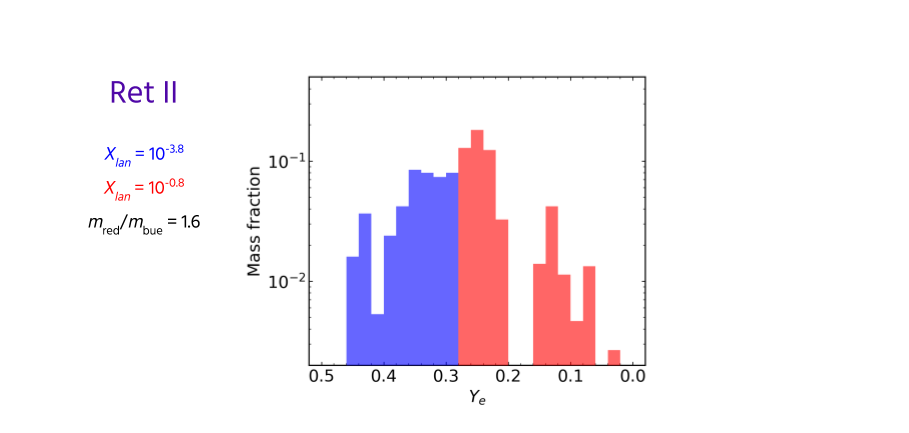
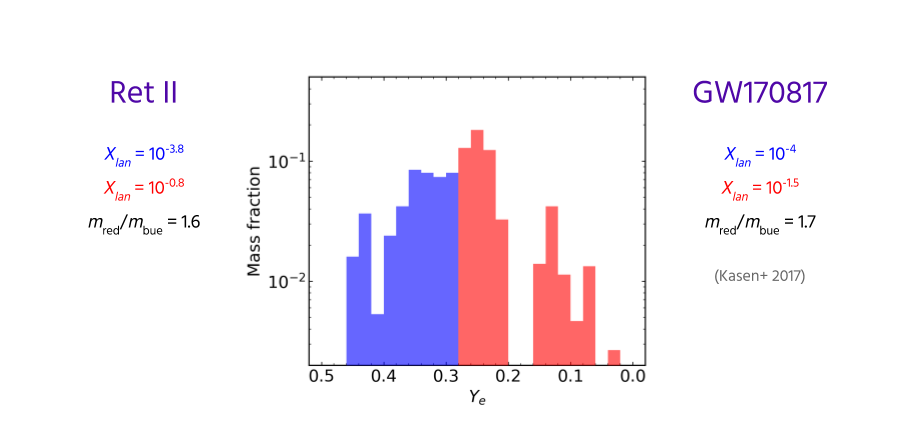
Results derived from r-II stars
agree* with NSM observation
Summary and Outlook¶
The actinides are over-produced in very cold, neutron-rich (tidal) ejecta
NSMs could still be an actinide-boost source if most of the ejecta mass does not contribute actinides
The same r-process source can in principle account for observed actinide variations
How do the empirically built ejecta distributions compare to NSM simulations?
Entropy, dynamical timescale, nuclear physics variations...
Special Thanks¶
Rebecca Surman (ND), Nicole Vassh (ND), Matthew Mumpower (LANL), Trevor M. Sprouse (ND)
Gail C. McLaughlin (NC State), Anna Frebel (MIT)
Timothy C. Beers (ND), Terese T. Hansen (TAMU), Chris Sneden (UT-Austin), Vinicius M. Placco (ND),
Ian U. Roederer (UMich.), Charli M. Sakari (UW), Rana Ezzeddine (MIT)
Grant Mathews (ND), Ani Aprahamian (ND), Toshihiko Kawano (LANL)
